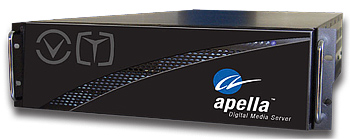Beverly Hills Goes Digital With Video Technics
BEVERLY HILLS, CALIF.
Award-winning Beverly Hills Television (BHTV) operates two channels, BHTV10 and BHTV35, which feature live city council meeting coverage, programs on a variety of city services, local information pages and educational programming.
We currently operate from three different physical locations: City Hall, a production/edit department about a mile from there and our master control facility in a third building. Our workflow used to involve the recording of public meetings at City Hall, and then transported the tapes to our master control facility for playout on S-VHS video decks controlled by an aging automation system. Public service announcements or documentaries created by our editors were recorded on tape and walked over to master control.
COULDN'T WAIT FOR NEW FACILITY
The city is planning to construct a new, integrated studio facility, but I feared the old automation system wouldn't make it much longer and decided that we needed to make the jump to digital technology sooner rather than later.

Beverly Hills Goes Digital With Video Technics We initially looked at a video server for master control only, but after meeting with Video Technics' Andy Tuggle, I realized that products from his company could provide a complete workflow solution for us. The Video Technics' robust performance and networking capabilities impressed our IT team, and we were especially excited that VT's Apella servers could play out mixed video formats with different encodings back-to-back—MPEG-2, DV25—it didn't matter. Previously, we had to dub down our different media sources to tape, with the attendant generational quality loss. The Apella would allow us to transmit a wide variety of media without any quality loss.
As we were planning an upgrade to the City Hall facility, it made sense to ingest "live to file" at that venue from our four new Panasonic cameras. This led to the addition of a second Apella for City Hall, with system integrator TV Pro Gear overseeing the installation.
City council meetings can run two to five hours. The included VT Director and Proxy Editor software lets our team ingest the meeting footage via baseband SDI, quickly and nondestructively remove meeting recesses, and then send the file over the City's existing Ethernet LAN for addition to the playlist.
In our master control facility, one Apella server replaced three racks of aging analog gear. The VT Scheduler software lets us script satellite feed ingest during off-hours, and the built-in router control made ties to the old automation system unnecessary. We can browse our Chyron folders on the Apella, identify the file we want to use, accept the transitions, and pull the Chyron graphic in for playout. Our editors now produce PSAs and documentaries shot via DVCAM on the Final Cut Pro workstations, drag and drop the finished package into the VT HotFolder, and then the content is automatically ingested into the database across the street. No one touches tapes, bicycle media around or worries about third-generation videos failing in antiquated decks.
THIS ONE COMES WITH US
Best of all, when we move to our new facility, our investment is not lost—the Video Technics system can add additional servers for news trucks, incorporate centralized storage via NAS or SAN, and support most any type of NLE that we choose to add. So once we do finally shut the doors on our cable TV museum, our VT gear definitely won't be left behind.
Michael Forys is the cable TV program operations specialist for the City of Beverly Hills and has more than 15 years experience in video production and master control operations. He may be contacted at mforys@beverlyhills.org.
For additional information, contact Video Technics at 404-327-8300 or visit www.videotechnics.com.
The professional video industry's #1 source for news, trends and product and tech information. Sign up below.
